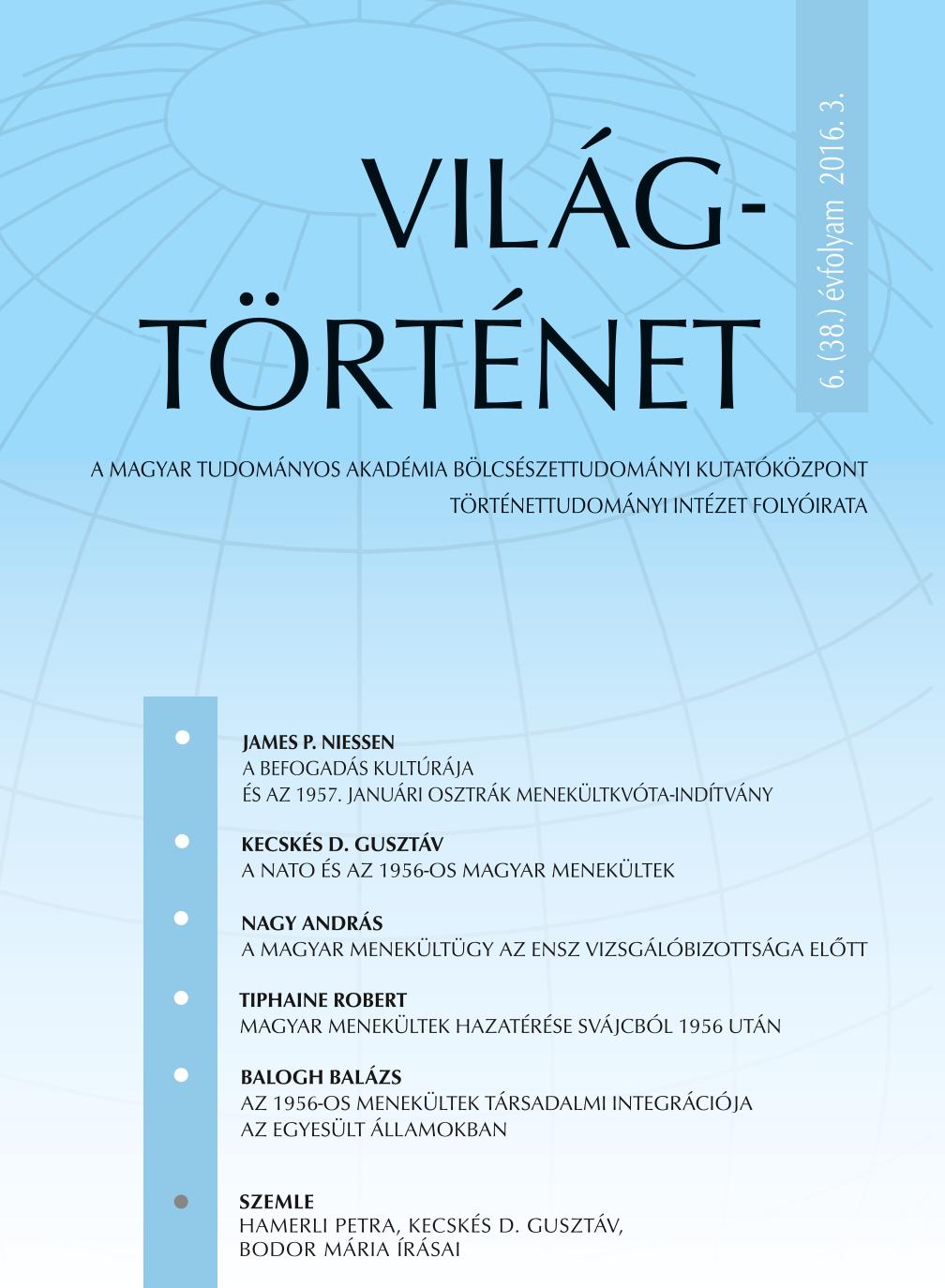A magyar menekültkérdés kezelése Jugoszláviában, 1956–1957
Yugoslavia and the 1956 Hungarian Refugee Crisis
Author(s): Attila KovácsSubject(s): Post-War period (1950 - 1989)
Published by: Magyar Tudományos Akadémia Bölcsészettudományi Kutatóközpont Történettudományi Intézet
Summary/Abstract: The 1956 revolution prompted nearly 200,000 Hungarians to leave the country for the West. However, shortly after the Soviet Union crushed the Revolution a reinforced control along the Western border made escape hazardous. According to official data, from October 23, 1956 to December 31, 1957, 19,857 persons moved to the Federal People’s Republic of Yugoslavia; 16,374 of them later emigrated to the West, 2,773 Hungarian asylum-seekers were repatriated, and only 634 allowed to settle down in Yugoslavia. Tito’s Yugoslavia made efforts to handle the Hungarian refugee problem first by closing the northern border and then, when the pressure of the refugees broke the attempted blockade, by returning them to Hungary from the border line. When Yugoslavia finally decided to accept the refugees in early 1957, it did so forced by an immense number of the refugees on the border and its fear of endangering its own Western reputation as a liberal-minded country. The Yugoslav authorities only managed to solve on year later the Hungarian refugee crisis with the decisive help of the international relief organizations, the United Nations High Commissioner for Refugees and the Intergovernmental Committee for European Migration
Journal: Világtörténet
- Issue Year: 2016
- Issue No: 3
- Page Range: 433-450
- Page Count: 18
- Language: Hungarian

